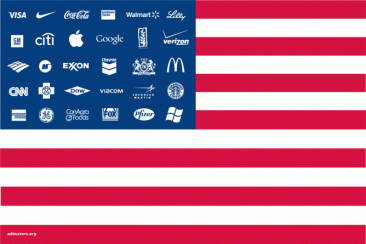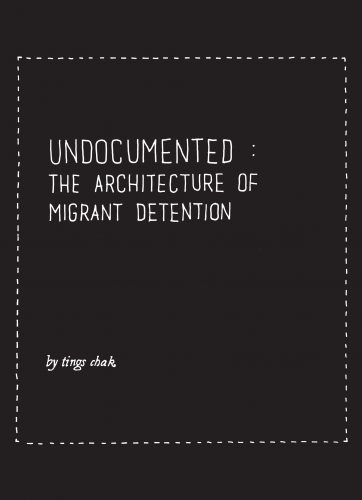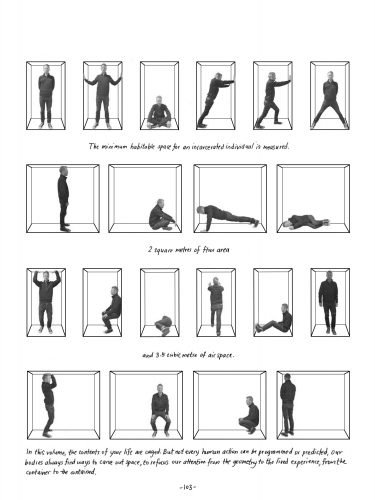
“Advertising invalidates people, leading to anger. Anger turned sideways, that’s cultural jamming. It’s a way of reinserting ourselves into culture,” says Shanee Prasad, a BC-based teacher and activist. She was giving a workshop entitled Taking on the Madmen of the Fossil Fuel Industries: Busting Ads and Changing the Conversation at the Peoples Social Forum held at the Ottawa University (Canada) from August 21-24, 2014.
According to the organizers “The Peoples’ Social Forum (PSF) is a critical public space aimed at fostering activist involvement of individuals and civil society organizations that want to transform Canada as it exists today… a space for social movements to meet and converge, for the free expression of alternative ideas and grassroots exchanges… The PSF is part of the global movement of social forums that have emerged at different levels since the first World Social Forum (WSF) was held in Porto Alegre (Brazil) in January 2001. The last World Social Forum was held in Tunis in March 2013 and the 2015 one will also be organized in the same city.”
The newsletter I subscribed to after I registered for the PSF promised 500 workshops classified under the following themes: Climate, Communication, Community, Earth, Food, Economy, Gender, Governance and Democracy, International, Knowledge, Migration, Movements, Public Services and Work. In addition, there were 20 Movement Assemblies (a few more came about spontaneously), a slew of artistic performances, concurrent film screenings, a march, public meetings and presentations at the People’s Square by notables like Naomi Klein, and the 5th Annual People’s University (http://www.socialistproject.ca/events/e2294.pdf).
This article focuses on the workshops I attended on using alternative media and cultural tools. Apart from cultural jamming, I learnt about activist comic books, how to write a protest song, how to document an event using a smart phone (http://www.campaigngears.com and http://wildrun.ca) and a collective intelligence-gathering tool called Assembl. All the workshops were interactive, with a lot of exchange between presenters and participants.
Back at Busting Ads workshop, Prasad and Santoro briefly introduced us to cultural jamming “gurus” like British-born Banksy, American-born Mark Dery, who published a pamphlet entitled Culture Jamming: Hacking, Slashing, and Sniping in the Empire of Signs in 2010, and Kalle Lasn, co-founder of the good old, Canadian-born Adbusters (Adbusters is an organisation that looks at our mental environment and how we come at media). Jonah Sach’s book, Winning the Story Wars, was also mentioned.

Adbusters – Corporate America Flag
Ad busting takes various forms: a splash of ink may appear on the screen as the ad plays out, causing a tangible rupture and disrupting viewer involvement; or the entire ad may be redone using the same or similar imagery, but with a different script that critiques the original message, often humorously. This latter approach was taken with an Enbridge corporate ad campaign in 2009. There is also website busting where a parallel, faux website is created for the targeted product or company, as was done with Suncor.
“This kind of imagery really resonates with youth. And the best part is that you work in teams when you go out and bust ads in public spaces or make alternative installations. It’s fun and energizing,” says Prasad. The idea is to break the link between the ad and the underlying value or concept it is selling, such as happiness, prosperity or a healthy community, and expose the lies that ads are often built on.
The workshop moved on to a hands-on, ad busting exercise using glossy magazines, scissors and markers, but I had to leave to catch the Activist Media Mixer. Here, Sharman Khan and Sandra Jespersen introduced their audience, a group of media practitioners, to the Media Action Research Group (MARG) Project. MARG is an anti-capitalist, feminist research collective based in Quebec and Ontario that studies radical, activist media around the world. The research project aims to explore and document the process of organization in radical media using a Participatory Action Research methodology, deliberately eschewing conventional academic research models that MARG sees as exploitative and uni-directional. The project will also build networks and capacity within communities to do activist media, for example by holding workshops that deliver specific training. The essential principle is to respond to articulated community needs. Funding comes from a multi-year Social Sciences and Humanities Research Council (SSHRC) grant that is channelled through Lakehead University, Orillia. (Contact sharmeen@resist.ca or media-action@lakeheadu.ca)
After this introduction, and as part of the MARG project, we split into small groups to discuss the pros and cons of alternative media. A number of problems were identified: lack of funding; people getting burnt out because of working on alternative media in addition to one’s daily job; alternative media practitioners being labelled radical and marginalized by mainstream media and society at large; power and oppression playing out negatively in alternative media organizations; and the difficulty of training activists or people embedded in social movements, to create their own messages using diverse media.
People also spoke about strengths and possibilities. Acceptance of honest, activist media producers and activist media outlets is increasing. The distance between activist media producers and some mainstream media practitioners may not be that wide, and fruitful collaborations may be possible. The recommendations made included specifically outreaching groups that have been traditionally ignored by media, such as people with disabilities and Aboriginal groups, making the connection between local and global issues, and connecting the work of individual media activists to larger movements for social change. Self-reflection, that is, asking the question – are we actively incorporating anti-oppressive principles in our work and our organizations – was seen as key. An interesting idea that came up was establishing community-based, alternative media centres. People also said that the role of alternative media makers is important and needs to be recognized.
Full disclosure: The workshop I am going to speak of next, entitled Introducing Assembl, was co-presented by my partner, Marc-Antoine Parent. The other presenter was Frank Escoubes of Imagination for People. Assembl is a new, collective intelligence tool currently under construction that has undergone some field-testing. It can help a large group identify key topics, classify contributions and craft a synthesis for shared understanding, with the whole process taking place online.
Most online discussion tools have a linear response format that leads to repetition, a lack of “real” conversation and an inability to reach consensus, among other issues. The workshop demonstrated how opinions expressed on the Assembl platform (which is Open Source), are organized into a kind of table of contents by “harvesters” with periodic summaries of the online conversation being sent out and validated by participants. The summaries are akin to plenary sessions in real-life conferences and also help participants who have gone off the forum to catch up. The tool allows people to weigh in on certain opinions and ideas. It will incorporate a “voting system” in the future.
The most effective online debates that have occurred using Assembl had two features – they are time-bound and well managed. Assembl can be used before or after a group meeting or a conference so that people can reflect and opine on a topic before they come to the event, or take a final decision after they have left. The tool also allows participants to co-write final summaries.
Tings Chak, a multidisciplinary artist and designer who works with the End Immigration Detention Network, presented a workshop entitled Comics! POC Telling Stories and Building Social Movements. She started out with a critique of mainstream comic culture. “Voices of people of colour are absent in comics and comic making,” she says. And when comics do feature characters from diverse backgrounds, the representation can be problematic.

Marvel’s Kamala Khan. Image from http://rootnotion.co.uk/pakistani-ms-marvel-black-hispanic-spiderman/
Chak showed the audience a new Ms. Marvel heroine — Kamala Khan — a young, Muslim-American woman. “They show her confined in her traditional family and then coming out as a strong, Western style, liberated woman. And guess what her power is? Shape shifting,” says Chak. Chak believes that the message here is that of integration rather than a real recognition of diversity.
Jeff Lemire’s comic book character, Equinox, was inspired by a young, Aboriginal woman activist. “When a white person takes on a theme like that s/he is taking up the space which is no longer available to a person of colour. As it is, mainstream publishing is less accessible to people of colour,” Chak says.
I raised the issue of an artist’s freedom to choose his or her subject. A discussion followed and the consensus was that if a person creates a character from another ethnic group it is important that s/he collaborate with the community. This is especially relevant if the character is inspired by a real person. An artist who is completely outside that ethnic community cannot come up with an authentic representation. (Research reveals that Lemire is conscious of race issues, and has done extensive research and developed community links while creating the Equinox character.)

Front cover of Undocumented Architecture by Tings Chak
Chak was politicized by David H.T. Wong’s Escape to Gold Mountain, which she described as a historical comic. “It was how I learnt about the solidarity between Chinese workers and Aboriginal people in B.C.,” she said. She also mentioned Aya of Yop City by Marguerite Abonet, which is set in the Ivory Coast of the 1970s and Marjane Satrapi’s Persepolis. Chak’s own comic book is called Undocumented, The Architecture of Migrant Detention. The book marries her professional training as an architect with her activism.
“Half a million people in Canada are undocumented; they came in legally but lost status,” she says. “There are three immigration holding centres in Canada, in the outskirts of cities, hidden. Some people have spent 10 years in a detention centre. Some 800 kids have been detained and babies are born here too. They are told that they are free to go.” Of course their parents must continue in detention!

A page from Undocumented Architecture
Chak also showed us another activist comic book in the making: Kwentong Bayan: Labour of Love,a comic book project about the real life stories of Filipina migrant workers in the Live-in Caregiver Program. It is created by Toronto-based illustrator Althea Balmes and writer Jo SiMalaya Alcampo in close collaboration with caregivers and supporters.
The workshop led by the Montreal Raging Grannies put a song on everyone’s lips. We split up into groups and came up with themes for the song we wanted to write and sing. Then we chose a song everyone knew, which in our case turned out to be “You are My Sunshine.” Next we came up with lyrics that fit this tune. Our song started out like this – You are my planet/ My only Planet/ If we destroy you/ There’s nowhere to go…!
The last word: An Alternative Media Assembly was held and is fully documented here (http://psfaltmedia.tumblr.com). This link also has other articles and resources on how to advance the alternative media revolution.